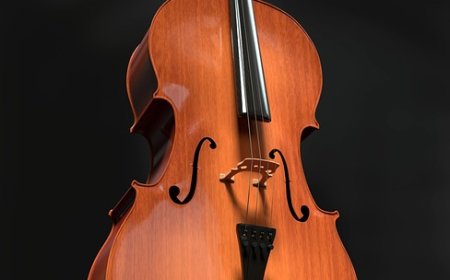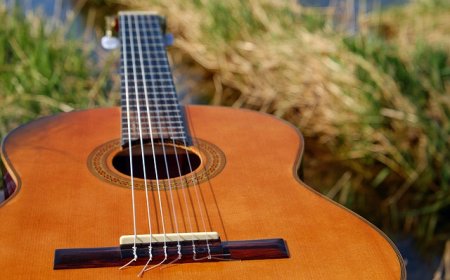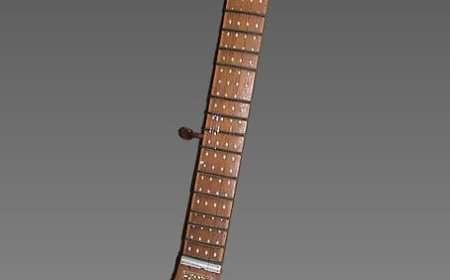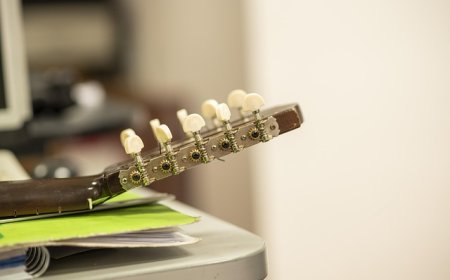Kora Facts for Students | Learn About the African Harp
Discover the kora—an African string instrument played like a harp and rich with storytelling tradition. Learn how it works, its parts, history, and legendary players.
🪕 All About the Kora
🥇 Introduction
The kora is a beautiful 21-stringed instrument from West Africa that sounds like a harp and is played by plucking strings with both hands. It has a calm, flowing sound that's often used to accompany singing, storytelling, and ceremonies. The kora belongs to a long tradition of music passed down from generation to generation by griots, or jali, who are West African historians, poets, and musicians.
🎶 What Is a Kora?
The kora is a plucked string instrument that combines features of both a harp and a lute. It has a large gourd resonator covered with animal skin and a long wooden neck with 21 strings, which the player plucks with their thumbs and index fingers.
It is usually played while sitting down, with the gourd resting between the musician's knees. The kora produces melodic, rippling sounds that are often used in traditional Mandinka music, and its music can be solo or part of a group.
Korasp are traditionally played by members of griot families, who learn the art of music, storytelling, and history from their parents and elders.
🧩 Parts of the Kora
The kora's construction is both traditional and creative. Every part is handmade and serves a special purpose:
-
Calabash Resonator - A large, dried gourd that acts as the body and amplifier
-
Cow Skin Cover - Stretched over the calabash to help produce sound
-
Neck (Konkoni) - A long wooden pole where the strings are attached
-
Strings - 21 strings made from fishing line or traditionally twisted animal hide
-
Bridge (Kambengo) - A tall wooden piece that holds the strings in two rows
-
Tuning Rings (Konso) - Leather rings tied along the neck used to change pitch
-
Hand Posts - Two wooden rods on either side of the strings to hold while playing
The kora's design is completely acoustic, and the musician uses only their fingers to create complex melodies and rhythms at the same time.
⚙️ How Does the Kora Work?
The kora produces music when the player plucks the strings with their thumbs and index fingers, one hand on each side of the bridge. The vibrations travel through the bridge to the calabash body, which makes the sound louder and richer.
Each string is tuned to a specific note, and the tuning rings allow the musician to adjust the scale. The strings are arranged in two vertical rows, and players often create interlocking rhythms and flowing melodies, much like a harp or keyboard.
The music of the kora often follows traditional patterns passed down through families and is used to tell stories, praise ancestors, or mark important events.
📜 History of the Kora
The kora comes from the Mandinka people of West Africa, especially in countries like Mali, Senegal, Gambia, Guinea, and Burkina Faso. It dates back over 700 years, and its music is deeply connected to the griot (jali) tradition.
Griots were respected musicians, storytellers, and keepers of history. They used the kora to share the history of families, leaders, battles, and wisdom. The knowledge was passed down orally, and children often began learning the kora at a young age.
In modern times, the kora has become an international symbol of African culture and music and is played in concerts around the world.
🥁 Famous Kora Players
These musicians helped share the beauty of the kora with the world:
-
Toumani Diabaté - Grammy-winning master from Mali and part of a famous griot family
-
Sidiki Diabaté - His father and one of the first to record kora music
-
Ballaké Sissoko - Known for peaceful, expressive playing and international collaborations
-
Seckou Keita - A modern kora player who blends traditional and global sounds
-
Sona Jobarteh - The first female kora virtuoso from a griot family in The Gambia
-
Jali Nyama Suso - Helped introduce the kora to audiences in Europe and America
🎶 Learning to Play the Kora
Learning to play the kora often starts within families, passed down by oral tradition. Today, music schools and videos help new students learn too.
Beginners start with:
-
Tuning the 21 strings to a specific scale (often heptatonic or diatonic)
-
Learning simple picking patterns with the thumbs and index fingers
-
Practicing melodies, harmonies, and repeating phrases
-
Building muscle memory for finger independence
-
Learning to sing and play at the same time
Because of its special layout, the kora teaches musical thinking that's both rhythmic and melodic-ideal for creative young musicians.
😄 Fun Facts About the Kora
-
The kora is made from a giant gourd, animal skin, wood, and fishing line!
-
It's often called the African harp-lute.
-
Traditional players never read music-songs are passed down by memory.
-
The kora has 21 strings, more than most other folk string instruments.
-
Some modern koras use guitar machine heads instead of leather rings for tuning.
-
The kora's music is used in storytelling, praise songs, and ceremonies.
-
A full performance can include melody, harmony, rhythm, and singing-all at once!
👧 Kid-Friendly Summary
The kora is a 21-string instrument from West Africa that sounds like a harp. You play it by plucking the strings with your fingers. It's often used in songs and stories and is passed down through families. Its peaceful, rippling sound is loved by people all over the world.
📚 Vocabulary Words
Kora – A 21-string African instrument played like a harp
Griot (Jali) – A West African storyteller, historian, and musician
Calabash – A large gourd used to make the kora’s body
Bridge – A tall wooden piece that holds up the strings
Plucking – Pulling a string with your fingers to make a sound
Tuning Rings – Leather rings used to tune the kora’s strings
Resonator – The hollow part that makes sound louder
Tradition – Ideas and skills passed down through generations
❓ Interactive Quiz (8 Questions)
1. Where does the kora come from?
A. India
B. South America
C. West Africa
D. East Asia
2. How many strings does a kora usually have?
A. 6
B. 12
C. 18
D. 21
3. What is the kora’s body made from?
A. Plastic
B. Calabash gourd
C. Metal
D. Bamboo
4. What is a griot or jali?
A. A drummer
B. A West African storyteller and musician
C. A dancer
D. A chef
5. How is the kora played?
A. With a bow
B. Blown into like a flute
C. Struck with sticks
D. Plucked with fingers
6. What do tuning rings do?
A. Make sound louder
B. Decorate the kora
C. Tune the strings
D. Cover the bridge
7. What kind of sound does the kora make?
A. Loud and sharp
B. Smooth and echoing
C. Deep and metallic
D. High and squeaky
8. Who is one of the most famous modern kora players?
A. Ravi Shankar
B. George Harrison
C. Toumani Diabaté
D. Ludwig van Beethoven





















































